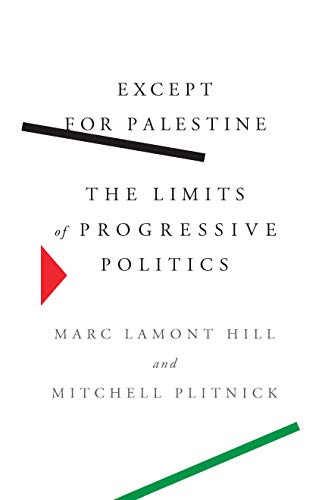The Package King: A Rank-and-File History of UPS, Joe Allen, Haymarket Books, 2020, pp. 246, ISBN: 978-1-64259-164-4
Dig Where You Stand was a handbook published in 1978 by the illustrious Swedish author Sven Lindqvist on how industrial workers could research the history of their work and workplaces. After touring Latin America, Lindqvist realized that “no area of modern history has been more distorted by one-sided treatment than the history of business.” As he stated, histories of businesses sought to elevate the role of management and shareholders while erasing the crucial contributions of workers who were presented as parasitic in their illegitimate demands on the benevolent organization. But “those who are to conquer the company must first conquer the picture of the company,” and Lindqvist provided a guide to workers on how to do just that. He instructed them to turn to journals, documents, and, most importantly, oral testimonies of their comrades and predecessors to realize their historical position and political significance. Their lived experience would then necessarily clash with the rosy portrayals of company founders and their practices. By laying bare the brutality of the modern company, the workers would be able to overcome it through praxis.
The publication sold out in a matter of days, and more than 10 thousand workers’ research groups formed in companies across five continents. Joe Allen, the author of The Package King, worked for United Postal Services (UPS) for a decade, dividing his time between its Boston and Chicago hubs. His book follows Lindqvist’s edict and tells the story of the Big Brown machine by way of its workers’ struggles with their management and their labour representatives in the Teamsters union from the company’s founding in the early 20th century to the 2016 contested union elections and 2018 contract negotiations. Through the narrative, Allen reveals the existence of a labour aristocracy, willing to work with the management to further its private interests at the expense of the rank and file, as well as a company, willing to trample the rights and health of workers to increase its profit margins. The author contextualizes the history of UPS workers and the Teamsters union within the rapidly changing logistics industry and the era of rapid globalization, explaining how we got to the present.
UPS was founded in Seattle in 1907 as the American Messenger Service by friends Jim Casey and Claude Ryan, who borrowed $100, hired six boys and tasked them with delivering telegraphs, messages and running errands for others. As Allen recounts, Seattle and the Pacific North-West at the time were hotbeds of radicalism, with the Wobblies organizing thousands of workers and Eugene Debbs enjoying significant popular support. In 1919, while Casey was renaming his company to UPS, the Seattle General Strike paralyzed the city, and the elected strike committee ran it for five days. Fearing worker unrest, Casey invited the Teamsters, then known to be pro-business, to represent his workers along the West Coast. The 1920s saw a brutal crackdown by the federal government, who feared the spread of Bolshevism, which allowed Casey to redesign business processes and turn his package hubs into replicas of Ford factories, with conveyor belts humming in massive hubs. UPS was helped in their business plans by pro-business union politicians who advocated collaboration. The stage was set for years to come, and the pattern of union collaboration with the management at the behest of the rank and file was to plague UPS workers for years to come. Complacency allowed UPS to run roughshod over the interests of the workers while upholding its own. With government investment in infrastructure, effectively acting as a subsidy for the company, it facilitated its expansion across the 48 contiguous states, eventually spreading to West Germany as well.
When New York was gripped by striking painters and telecommunications workers in the years immediately following the end of World War II, including 12 thousand Teamsters, the union leadership sided with the management and deplored the actions as “foolish and futile.” It even refused to meet with the newly incorporated Macy’s delivery workers to hear their demands. Teamster president Dan Tobin ordered the strikers back to work, but they rejected and won some concessions. However, their local victories were not translated into national success stories as UPS and the Teamsters had no national contract until the late 1970s. By keeping the locals separated, UPS could control them easier and prevent cohesive organizing. Working with collaborative union officers, such as Thomas Simcox, they pacified the militant rank-and-file. Their more militant members who refused to be silenced were blackmailed, fired or disappeared, like James Hoffa, or had their entire locals dismissed, as happened in Philadelphia when UPS decided to stop its operations there in 1967 due to uncontrollable labour unrest. Still, others collaborated with the FBI and the Mafia, which infiltrated and controlled the Teamsters, who were, in turn, happy to ally themselves with reactionary institutions such as the Urban League and others to quench the radicalism of the 1960s. As a result, the Teamsters’ leadership resembled emperors, with union presidents carried like Emperors at union conventions.
Naturally, weak unions lose their members. Between 1981 and 1986, as Reagan began restructuring the economy and weakening the union further, the Teamsters lost 300 thousand members. During this time, labour protections were eroded, which resulted in the impoverishment of many. At the same time, the logistics market was consolidating. UPS’s main competitors, the United States Postal Services and the Railway Express Agency, began losing market share by refusing to ship packages over a certain weight. UPS was only too happy to take over, increasing its shipping weight limits from 10 pounds, which could easily be carried and sorted in the hubs, to 50 and then to 150 pounds in the 1990s. The increase in weight was, quite literally, shouldered by the workers who could not fight the management. This resulted in many workplace injuries, even deaths. At the same time, the period saw new developments in business process organizing, with increasing use of science to increase efficacy. Workers were required to complete over 200 deliveries in a day and berated if they failed to do so. Their actions were systematized and enforced through company documents, which the workers were forced to follow to the letter. The goal was to turn the workers into machines, but the workers exceeded even that demand. To further cut costs and increase profits, UPS began hiring part-time workers who were paid less than those with full-time contracts, a practice that holds today and is one of the main reasons for UPS’ financial success. Compliant workers, sympathetic State, and a litany of lawyers, lobbyists and politicians who worked to destroy the last hurdle to pure exploitation that was the Occupational Health and Safety Administration and advance the Republican Revolution ensured that UPS becomes the dominant market player.
The weak Teamster union was imploding, slowly suffering into disarray and history. Challenges came from the rank and file, first in the form of UPSurge in the 1970s. UPSurge came at the heels of strong rank and file militancy that began in Cleveland, only to spread its ideas nationally through its publication UPSurge. UPSurge only highlighted the split between the rank and file and union officers and showed that proper organizing could force the officers to bend to their demands. Though it dissolved in the late 1970s with the failure to agree on a beneficial contract, it was succeeded by the Teamsters for a Democratic Union (TDU) in the 1990s. Allen describes the excesses of the official leadership at the time. Things were so bad in the Teamsters that the federal government filed a lawsuit against it, threatening to place the union into the hands of the State. Fortunately, TDU fielded Ron Carney as the candidate for the new executive board. He moved to rid the union of its mafia-like qualities, selling “the Teamster limousine, the condominium in Puerto Rico, and the luxury jets.” Carney succeeded in reforming the Teamsters, but his success annoyed UPS, who moved to undercut him, threatening him with murder. What ensued was a coordinated slander campaign involving the Courts and the NLRB, which eventually resulted in him being barred from the Teamsters.
With the rise of online shopping and the importance of shipping to the smooth functioning of capitalism, the objective power of workers in the shipping industry in relation to capital increases. They have the power to literally stop the circulation of goods and prevent the realization of profit. In order to channel this power into an applied program and objectives, there needs to be an organic labour union, genuinely representing the interests of its rank and file. The rise of Amazon with its exploitative labour practices threatens to undo the modest gains made by the Teamsters. Therefore, Allen is right to call for an industry-wide union that would amalgamate the already existing unions present in major shipping companies into one big union. However, why stop at the national borders? Why not agitate for an international union that would connect all workers in the industry? Their industrial actions could then be extended beyond the narrow confines of wage-slavery to truly revolutionary heights. They could address social justice issues that do not directly affect them but their brothers and sisters. International unions could coordinate struggles and ensure that Third-World workers do not subsidize the lifestyles of those workers in developed countries.
There are many historical instances of international union cooperation. For example, when the Dutch cargo ship Nedlloyd Kimbereley docked in San Francisco in 1984, members of local 10 of the ILWU refused to touch any cargo from South Africa, leaving it in the ship to protest apartheid. Shamefully, when it came to the apartheid, ILWU proved to be the only union that acted against it. The same local answered the 2010 Palestinian General Federation of Trade Unions’ calls to boycott Israeli cargo in retaliation against the Israeli assault on the Mavi Marmara flotilla. Others in Malaysia, Norway and South Africa followed suit. Similarly, longshoremen in Durban refused to unload the Chinese cargo ship Ai Yue Jiang carrying large amounts of ammunition and weaponry destined for Zimbabwe in 2008. South African Transport and Allied Worker’s Union upheld its internationalist ethos and acted in solidarity with their fellow workers. It is this commitment to freedom struggles and social justice that should guide the actions of the unions.
Joe Allen’s The Package King is instructive in its portrayal of various corporate gimmicks used to weaken the power of the union. His digging where he stood shed light on the darker corners of UPS’ history, which can be used in developing new labour strategies. Nevertheless, its importance should also transcend the narrow geographical confines and demands for beneficial treatment of some section of the working class, defined by race or citizenship. There is power in a union, but the power is greater in the internationalist working class.




